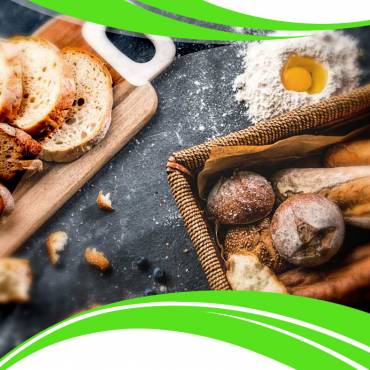Fibre is essential for normal gut functioning and most of us need to be eating more of it! Less than 1 in 10 adults in the UK are meeting the recommendations for fibre intake1.
What is fibre?
Dietary fibre is the edible part of plants that our small intestine cannot digest and absorb. It moves into the large intestine where it is either completely or partially broken down by bacteria that live there. There are three main types of fibre: insoluble fibre, soluble fibre and resistant starch.
Difference between insoluble, soluble and resistant starch?
Insoluble fibre: Our bodies cannot break down this type of fibre, as our bodies don’t have the right type of enzymes. Instead, it passes through our bodies, adding “bulk” to our stools which helps to prevent constipation.
Soluble fibre:This dissolves in water and forms a gel-like layer, helping to keep our stools soft. It is found inside the plant cells of fruits and vegetables. It is associated with lowering LDL cholesterol and stabilising blood glucose levels
Resistant starch: While not traditionally seen as a fibre, it acts in a similar way. It can also be fermented in the large intestine where your gut microbiota “feed” on it and produce beneficial compounds called short-chain fatty acids. It’s also a great source of prebiotic’s which promote the growth of beneficial gut bacteria.
Getting a variety of these different fibre types through our diet is key!
Where can we find it in the diet?
Fibre is found in many plant-based foods, some of which you may already have in your kitchen!
Insoluble fibre can be found in:
• High fibre breakfast cereals
• Wholemeal bread, pasta and rice
• Vegetable and fruit skins
• Nuts and seeds
Soluble fibre can be found in:
• Beans and lentils
• Vegetables
• Fruits
• Grains
Resistant starch can be found in:
• Cooked and cooled potatoes
• Unripe bananas
• Raw oats
Why is it important?
There are a number of health benefits of fibre:
• Prevents constipation
• Help lower LDL cholesterol
• Help lower high blood pressure
• Stabilise blood glucose levels
• Lowers risk of heart disease, diabetes and colorectal cancer
• Promotes a sense of fullness
Also, fibre “feeds” our gut microbiota, promoting the growth of beneficial bacteria and keeps them thriving. When our gut microbiota “feed” on dietary fibre, they produce short-chain fatty acids. Short-chain fatty acids are beneficial to our health for a variety of reasons including modulating our immune system, reducing inflammation and maintaining the lining of our gut.
What is the recommendation?
It is recommended that adults get at least 30g of fibre per day.
Increase your intake slowly!
Practical tips on how to meet the recommendation
• Choose high fibre foods! For a food to be considered high fibre, it must contain 6 or more grams of fibre per 100g.
• Increase the variety of plant-based foods as different plant-based foods contain different types of fibres along with different vitamins, minerals and phytonutrients. Aim for 30 different types of plant-based foods each week7.
• Sprinkle a tablespoon of seeds or a handful of nuts on to your breakfast or when having a yoghurt.
• Keep the skins on your fruits and vegetables where possible
• Choose wholemeal bread, pasta and rice at lunch and dinner times.
• Swap half of your minced meat-based dishes for lentils or other beans – this works brilliantly with bolognaise!
• Add extra vegetables to sauces like bolognaise, chilli and curry.
• For breakfast, have porridge or high-fibre cereal with some fresh fruit on top and a sprinkle of seeds- delicious!
• As a snack, have a piece of fruit with a handful of nuts or hummus with some raw veggies.
• Make sure to drink plenty of fluids
Let’s bring it all together and see what 30g of fibre looks like in a day!

Key take home message
When it comes to fibre, including a wide variety of different fruits, vegetables, beans and pulses, wholegrains, nuts and seeds really is key. When you think of fibre, think of 30 – 30g of fibre per day and 30 different types of plant-based foods across the week.






